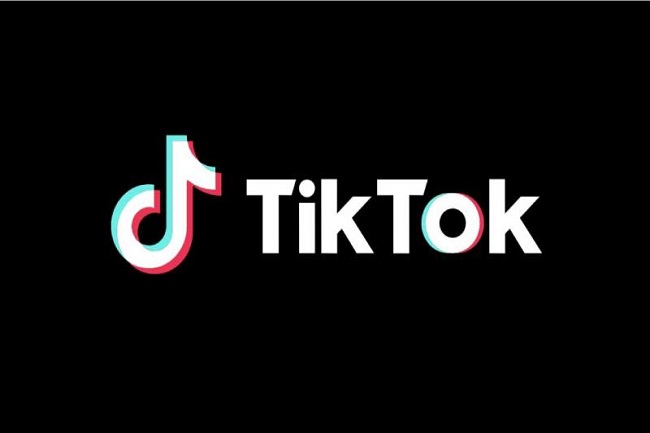Rebranding is an important step in the evolution of a business. Companies make this shift to cater to the current trends, needs, and circumstances of their audience. Rebranding is a decision that’s made when brands feel they need to make a change in order to stay relevant.
Communication between brands and users has never been easier than it is today. In the digital age, users hold a lot of power—they can do everything from cancel celebrities and influencers (which basically means taking away their power by deeming them irrelevant and/or unfollowing them in hoards), to demand the redesign of a movie character (take a look at Sonic), and they can even pressure huge corporate behemoths to provide answers for huge social justice issues. This constant stream of communication from users to brands is what has made rebranding an all-important issue.
One company that has had it especially rough in the public eye is Facebook. From the Cambridge Analytica data scandal in 2018, to the data privacy concerns in 2019, to more animosity over their decision to not fact-check political ads, this social network has been the target of social scorn for long time.
New Branding Aspects

Despite all the controversy, Facebook has still found time to address other areas of its business. Apart from confusion over the tech giant’s fact-checking decisions, a Pew research study found that 49% of Americans also had confusion over what apps belonged to the Facebook family; namely whether or not the company actually owned Instagram or not. So if you were wondering, “what’s up with the new Facebook app logo,” that logo doesn’t actually apply to the Facebook app. To clear up any confusion, Facebook rebrands as FACEBOOK and decided to rebrand all of its products and services by distinguishing the FACEBOOK parent company from the Facebook app with a new logo and adding “from Facebook” to its other apps. So now when users log onto Instagram, WhatsApp, Oculus, Portal, or Calibra, users see “from Facebook.” This rebranding campaign has allowed Facebook to quell any confusion over which apps the parent company owns and which they do not. The stark label provides clarification to users showing who exactly is behind the technology they’re using.
Facebook’s new logo design is a sleek take on the Facebook name and is written in all caps. According to the Facebook team, “the new branding was designed for clarity, and uses custom typography and capitalization to create visual distinction between the company and app.” How Facebook’s new logo design affects users is by providing that differentiation between the parent and the child. Apart from the visual distinctions of the new parent brand, the Facebook team noted three foundational design behaviors that make the structure of the parent company: clarity, empathy, and creating space. They wanted to create a brand that simplifies and helps users understand; they wanted to build a system that respects context and environment; and finally, they wanted to make sure they were creating a space that supports users and their stories.
Why Big Brands Should Consider Rebranding
Rebranding isn’t a one size fits all. Sometimes, companies need to do a top-down rebranding in order to save face with the public. Other times, rebranding just means giving your brand a facelift by incorporating a new logo design or color scheme. The reasons to consider rebranding are vast and vary depending on each company. Below, we’ve compiled the top five reasons why big brands should consider rebranding:
Relevance: The first and foremost reason that companies consider rebranding is relevance. Businesses need their brand to stay relevant to their target audience. Otherwise, why shouldn’t they choose a competitor instead? Maintaining relevance is at the heart of rebranding.
Acquisitions & Mergers: Another huge reason why businesses rebrand is because they acquire, are acquired, or merge with another company. You can see that this reason also played a hand at why Facebook needed to rebrand its parent company to FACEBOOK. With all the other services the company provides to its users, a distinction needed to be made. A similar situation can be seen in the Amazon and Whole Foods merger. Amazon’s branding appeared within Whole Foods stores not long after the announcement was made.
Repositioning: This reason for rebranding is when companies need to change the public’s understanding of what the product is and what it can offer. One of the most notable repositioning campaigns that happened in the last decade was the change of ABC Family to Freeform. The change came about because the network wanted a new name, look, and feel that directly spoke to its target audience. Tom Ascheim, President of ABC Family at Disney, said they’re looking to target viewers who are transitioning from childhood to adulthood, “between your first kiss and your first kid.”
Imagery: Sometimes rebranding just means that companies need to update certain aspects of their brand. A great example of this is Google. In 2015, the company decided to not only change its logo’s typography from serif to sans serif, but also lightened its signature colors as well. The evolution of the Google logo is a good reminder that sometimes not all rebranding efforts need to be extravagant.
New Management: Oftentimes, when new leadership enters a company, so too does a new vision for what the company should look like. Businesses like Uber and WeWork have changed their internal structure by replacing people at the executive level to address issues of branding. Their direction can rapidly alter the business as well as the public perception of the brand. A change in direction is the whole reason Uber brought in Dara Khosrowshahi (former CEO of Expedia Group) to help fix the company’s image and prepare it to go public.

The Ultimate Guide to Successful Rebranding
If you’re considering rebranding, it means that somewhere along the line a part of your brand was lost. And while rebranding may seem like a daunting task, it’s actually a great opportunity for your brand to get back in touch with your consumers. Below, we’ve compiled a list of steps your team can take to launch a successful rebranding:
Understand WHY: In order to come up with the best rebranding strategy for your business, you need to understand why your company wants to rebrand in the first place. To what extent does your business need to be rebranded? Are you looking to something more comprehensive that includes redefining your company’s vision, mission, and goals, or are you simply looking for a facelift? Identifying the reason your company needs to rebrand will help you determine how your team moves forward during this process.
Pinpoint Pain Points: After you’ve uncovered the reason your company needs to rebrand, you need to determine what outward facing content needs to be addressed. What are the pain points of your business? Where is the communication error happening between your team and your target audience? For a company like ABC Family, it was in their name. They wanted to put forth a better name that was more inclusive to their target audience and that’s how they landed with Freeform. Assessing the major factors are of your business’ branding elements, determine which ones need to be included in your rebranding strategy. These elements can be anything from your or color scheme, to the voice of your brand… anything that doesn’t effectively communicate your brand the way you want it to.
User Research: Now that you know the why and the what, next you must focus on who, i.e. your audience! It’s time to get reacquainted with one another with some good old user research. Figure out what your target demographic responds to in the current market. Conduct A/B tests on Google or Facebook to see what variations of your brand users resonate with the most. Think about how you can create a winning Facebook advertising strategy with your new branding and put it to the test. The best part is that you can keep altering and editing your campaign until you’re satisfied with the results.
Create a Roadmap: With all the information that you’ve accumulated, it’s time to set smart goals that will help you roll out your rebranding strategy. Create a timeline for your team and begin to set specific, measurable, attainable, relevant, and time-based goals. If you’re looking to rebrand and reimagine your digital presence, reach out to your local digital marketing agency and they may be able to help lift some of the burden off of your shoulders. They will also be able to inform you of how to use Facebook brand assets for your business.
Execute: The last and final step to rebranding is execution! While your team is redesigning the logo and reidentifying its values, take some time to inform your target audience of what’s going on. Let them know that this rebranding is about their needs and their wants so that your team can provide a better product or service to them. Being transparent through the whole process will not only help users mentally prepare for the final rollout, but will also make your new brand more easily digestible since they were anticipating the change. Remember, the whole reason behind the rebranding is so your users can have a more enjoyable experience when interacting with your business!
Key Takeaways
Whew, that was a lot! Hopefully, this blog post has shown you what Facebook’s new rebranding is all about and why rebranding is an important part of business. Rebranding is no small task and requires a deep understanding of your business and your target audience. And while it can take up a lot of time, energy, and resources, the payoff is definitely worth it. Below are the key takeaways about rebranding:
- Companies rebrand to maintain relevance with their target audience
- There are many other reasons companies choose to rebrand and it can be anything from an acquisition or merger, to repositioning, or even new management
- Not all rebranding strategies are made equal. You can have a full top-down restructuring of your brand that includes reidentifying your company’s mission and values, or you may just need a facelift and want to change your imagery to maintain relevance
- When heading to craft your rebranding strategy, identify the reason why your team wants to do so in the first place will lay a solid foundation for how your team should proceed
- Once you’ve identified why, determine the what, which is what your team needs to change in order to present your brand more effectively to the public eye
- After these two steps, conduct extensive user research to relearn your target audience and reacquaint yourself with what their current wants and needs are
- Creating a roadmap of smart goals will help keep your rebranding strategy on track for whatever timeline you set for your business
- Execution is the final step, but remember to actively communicate with your users so they are mentally prepared for the awesomeness they are about to see in the coming months. Being transparent is key so as to not disrupt your user’s behavior with your brand. The rebranding was also inspired by them and is for them, so let your audience know!





Tell us your thoughts in the comments